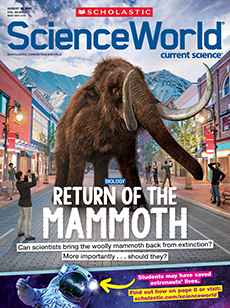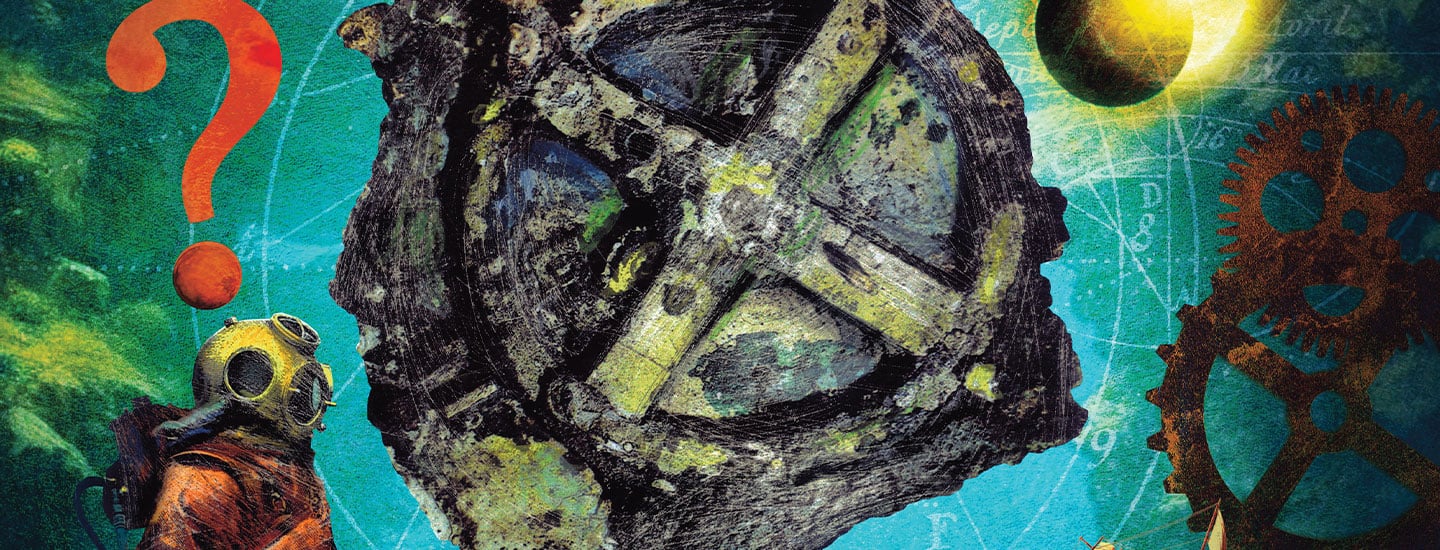JIM MCMAHON/MAPMAN ®
In the spring of 1900, a violent storm in the mediterranean sea forced a fishing boat to take shelter on the tiny island of Antikythera (an-tee-KITH-er-a), off the coast of Greece. After the storm passed, the ship’s captain sent a young diver out to explore the local waters. A few minutes later, the diver returned in a panic. He claimed he’d seen a pile of dead bodies on the seafloor! So the captain put on a diving suit and went to see for himself. He came back to the surface carrying a human arm—made of bronze! The crew had stumbled upon the remains of an ancient shipwreck.
A year later, the crew returned to explore the remains of the ship with the help of the Greek Navy. The sunken vessel turned out to be a 2,000-year-old cargo ship—and it was full of ancient treasures. Divers brought up bronze and marble sculptures, glassware, pots, jewelry, and coins. They also found a strange, unidentifiable artifact, or humanmade object of historical interest. It was a crusted, greenish lump about the size of a shoebox.
The lump was taken, along with the rest of the contents of the wreck, to the National Archaeological Museum of Athens. For months, it sat in storage unnoticed. Little did anyone know, this strange object would eventually come to be known as one of the greatest archaeological mysteries of all time.
In the spring of 1900, a fishing boat was caught in a violent storm in the Mediterranean Sea. The boat took shelter on the tiny island of Antikythera (an-tee-KITH-er-a), off the coast of Greece. After the storm, the ship’s captain sent a young diver to explore the local waters. A few minutes later, the diver returned in a panic. He claimed that a pile of dead bodies lay on the seafloor! So the captain put on a diving suit. He went to see for himself. He came back to the surface with a human arm—made of bronze! The crew had found an ancient shipwreck.
A year later, the crew returned. They explored the remains of the ship with help from the Greek Navy. The sunken ship turned out to be a 2,000-year-old cargo ship. It was full of ancient treasures. Divers brought up bronze and marble sculptures, glassware, pots, jewelry, and coins. They also found a strange, unknown artifact, or human-made object from the past. The crusted, greenish lump was about the size of a shoebox.
The lump and the rest of the wreck’s contents were taken to the National Archaeological Museum of Athens. For months, the lump sat in storage unnoticed. No one knew it yet, but this strange object was special. It would become one of the greatest archaeological mysteries of all time.

